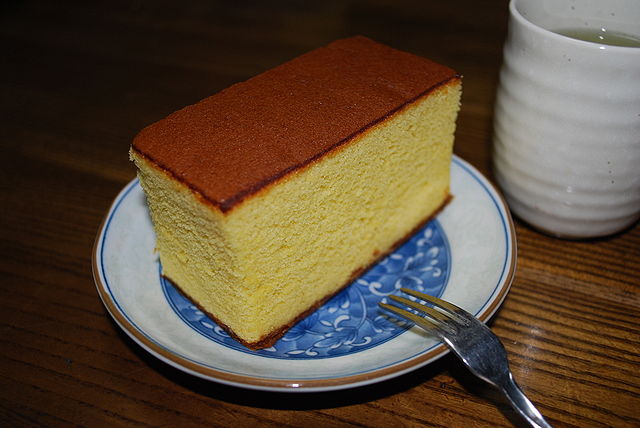Castella is a kind of wagashi developed in Japan based on the "Nanban confectionery". The batter is poured into large square or rectangular molds, baked in an oven and cut into long rectangular shapes. To suit the tastes of Japanese people, mizuame (水飴) was added to the sponge cake to make it more moist, and zarame , was added to the bottom of the sponge cake to give it a coarser texture.
Castella
A peach castella
Pão-de-ló: Castella's Portuguese ancestor
Detailed view of a Nagasaki-bought Castella cake
Wagashi is a traditional Japanese confection that is often served with green tea, especially the type made of mochi, anko, and fruit. Wagashi is typically made from plant-based ingredients with an emphasis on seasonality, and generally making use of cooking methods that pre-date Western influence in Japan.
Nerikiri (練り切り) in various shapes and colors. Asian skunk cabbage, rose of Sharon, hydrangea, and rose.
A bowl of matcha tea on a black lacquered tray with wagashi
Karakudamono
In the Kamakura period, yōkan (羊羹) was a sheep meat soup, and today's mainstream yōkan was born in the 1800s after the Japanese invented kanten (寒天, agar) in the 1600s. This thick Japanese jellied dessert is now made of adzuki bean paste, agar, and sugar.








